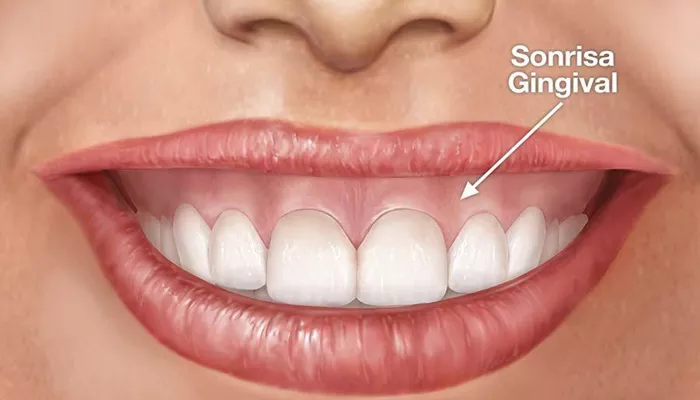This article outlines the detailed laboratory process for creating a long-term prototype aimed at developing and sculpting anterior gingival tissue. The project began with the design phase using exocad software, where issues related to access holes on the maxillary prototype were identified at the implant connection level . To address these concerns, a prototype was 3D-printed using Asiga DentaTRY. This initial prototype was then sent to a clinician for evaluation and approval of both the vertical alignment and overall aesthetics during a try-in appointment with the patient.
After the clinician’s review, the printed prototype was returned to the laboratory. All prosthetic connections were modified from the implant level to the multi-unit abutment (MUA) level. This involved using a combination of straight MUAs and custom MUAs, which were milled at TruAbutment in Irvin, USA. The implant-level connections were replaced with both MUAs and custom MUAs on the printed model . Following this adjustment, scan bodies (TruAbutment) were added in preparation for 3D scanning at the MUA–implant level, utilizing an Aadva scanner.
A new long-term prototype was then designed in exocad to match the new MUA–implant level. During this stage, the screw access holes were corrected. This specific case was designed as a single solid merged unit, which was subsequently imported into the iBar module (Blenderfordental). The one-piece merged design from exocad was then separated into a bar and shell design using the iBar module. Given the extensive edentulous area in the maxillary anterior region, the bar was milled (DWX-52D, Roland DGA) from TriLor techno-polymer (Bioloren), a thermosetting resin reinforced with multidirectionally oriented fiberglass.
The case was prepared for 3D printing on a MAX UV printer using Composer 2.0 software (Asiga). A total of three short builds were completed. The shell was 3D-printed with Rodin Sculpture nano-hybrid. This specific 3D-printing resin is designed for fixed restorations and long-term provisional restorations for both permanent and temporary use. The maxillary implant model was printed using Asiga DentaMODEL, while the gingival mask was produced using Asiga DentaGUM. TruAbutment digital analogues were inserted into the 3D-printed model.
Achieving a high degree of fit and precision requires an accurate combination of a 3D printer and 3D-printing materials.
Proper washing and polymerization of the materials are crucial to ensure the model is ready for the analogues. Detailed protocols are available in the instructions for use for Asiga DentaMODEL on the manufacturer’s website. Following these guidelines is essential for optimal mechanical performance and biocompatibility of the 3D-printed device.
Next, the gingival mask was assembled onto the model. A visual inspection of the bar and shell was conducted before cementing them together, while the shell remained attached to the supporting structures. These supporting structures were then removed, and no shaping was required at this stage. Shaping is best performed after the bar and shell have been cemented together.
The titanium bases and bar insert holes were lightly sandblasted at 300 kPa using 50 μm aluminum oxide. All components were thoroughly steam-cleaned and completely air-dried. Each part was placed in an ultrasonic cleaner filled with 99% isopropyl alcohol and then air-dried. G-Multi PRIMER was applied and allowed to air-dry thoroughly. Ensuring all parts are completely dry before cementing is crucial. For cementing the titanium bases into the TriLor bar, G-CEM LinkForce was utilized.
Before starting the polymerization process, the cemented titanium bases and the TriLor bar were positioned on the implant model, and MUA screws were inserted and hand-torqued. The model, now equipped with the TriLor bar, titanium bases, and screws, was placed in a light polymerization unit that utilizes dual heat and light polymerization. The heat activates the chemical polymerization process of the dual-polymerizing G-CEM LinkForce cement, as light cannot penetrate the TriLor bar.
In preparation for cementing the bar and shell, both components were lightly sandblasted at 300 kPa using 50 μm aluminum oxide. Both parts were thoroughly cleaned with steam and completely air-dried.
Finally, the bar and shell were submerged in an ultrasonic cleaner filled with 99% isopropyl alcohol and then air-dried. The screw access holes on the TriLor base were blocked with wax, and G-Multi PRIMER was applied to both the shell’s intaglio surface and the bar.
Excess cement was carefully removed using brushes soaked in 99% is opropyl alcohol.
The arch was then shaped and lightly sandblasted at 300 kPa using 50 μm aluminum oxide (the titanium bases should be wax-blocked during this stage). The arch was thoroughly steam-cleaned and completely air-dried before being placed in the ultrasonic cleaner filled with 99% isopropyl alcohol and air-dried again. G-Multi PRIMER was applied to all surfaces of the arch and air-dried. For both glazing and characterization, OPTIGLAZE color (GC) was used. The arch was polymerized in an Otoflash G171 (NK Optik) using 500 flashes in an inert atmosphere created with nitrogen. A final glaze was then applied using OPTIGLAZE color (Shades Clear and Clear HV), sealing and protecting the characterization.
It is crucial to use OPTIGLAZE in Shade Clear HV on all intaglio surfaces that will come into contact with oral tissue. This seal protects the tissue from the TriLor material, and at no point should unsealed TriLor be exposed to the oral environment. Any adjustments made to the TriLor bar will require resealing with OPTIGLAZE in Shade Clear HV.

